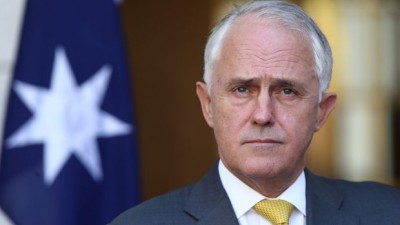Bartering on Refugees: The Costa Rica Solution

We will also participate in a US-led program to re-settle Central American refugees currently in a resettlement centre in Costa Rica. Malcolm Turnbull, Australian PM, Sep 21, 2016
It used to be claimed that you could not let the former Prime Minister, Tony Abbott, go anywhere with any degree of freedom. The mouth would open, the madness would come out. His successor’s efforts have not been much better, reflecting a deep seated pathology in the global refugee debate and notions of violated borders.
On arriving in New York, Malcolm Turnbull seemed full of poorly minted ideas. He insists that his country’s policy on asylum is one to be emulated – globally. “Addressing irregular migration, through secure borders, has been essential in creating confidence that the government can manage migration in a way that mitigates risks and focuses on humanitarian assistance on those who need it most.”[1]
What his portrait of purported balance ignores is the grotesque Pacific camp system that institutionalises torture and dehumanisation. As a video statement from Iranian journalist refugee Behrouz Boochani noted, a vain measure to convince delegates at the UN to pressure Turnbull, “Australia’s offshore policy is not based on border protection, it is based on torture.”[2]
The externalisation of all processes on treating and assessing the claims of refugees is an international malady. The European Union is erratically putting up fences in parts while allowing trickles in elsewhere. Countries are blaming each other for not pulling their weight. Fictional numbers of compromise are suggested, but the rise of toxic populism has hardened attitudes.
The United States is also undertaking its own reserved strategy in dealing with those feeling social strife in countries affected by violence. Strategists in Washington have been chewing over how best to deal with the influx of people fleeing Honduras, El Salvador and Guatemala via Mexicowith the US as an ultimate destination.
To that end, Australia has suggested itself as an unwitting accomplice in quelling the numbers coming into the US. Within twenty-four hours, the “Costa Rica” solution (or non-solution, as these things tend to be), was born. Turnbull had offered a hand to his US counterparts that Australia would do its bit “to pledge new commitments to support some of the world’s most vulnerable people.”
The Turnbull proposal, despite being deemed a “hoax” by opposition leader Bill Shorten, confirms a trading model for refugees. We will take some from the Costa Rica centre, and you, in turn, may take some of ours. That last point has been officially denied, though the discussion on trade is certainly on, given statements by the Nauru justice minister, David Adeang, that Nauru had invited “other countries to assist in finding durable resettlement options for our refugees.”
There is an irony in this, given the humanitarian pretence of governments who obsess about “breaking” various market models of people smuggling. Far from them to be the only ones engaged in the business of carting human souls across dangerous routes. This is global resettlement with an unacceptable face.
Such models are also premised on brutal presumptions: those seeking asylum and refugees will not be settled in countries of their ultimate destination, as this throws the international system out of kilter. They will, rather, be located in places of least comfort in a cultural and economic sense.
Turnbull’s approach has been sold before the United Nations as necessary for a credible border protection regime. Patching up porous borders wins votes, as does repelling unconventional refugee arrivals who dare travel by boat. That enables the government of the day to then raise the legal humanitarian intake without agitating the local electorate it wishes to pacify.
All this is then above board, made decently, without fuss and fury. In this case, the promise has been to make a previously announced figure – 18,750 – permanent, or at least up till the 2018-9 year. This neatly inflates Australian generosity, which, if it comes to crude figures, can be measured by the resettling of 11,776 people last year. In terms of recognising, registering or resettling refugees, Australia ranks a dismal 25th, according to the UN High Commissioner for Refugees.
Turnbull was also in the sweetening mood, promising to add $130 million over the course of three years towards “peace building and assistance to refugees, forcibly displaced communities and host countries.” This is additional to the $220 million in assistance to Syria and countries in its proximity.
Playing this electoral game of pick and choose comes with its risks. Polls held in various countries show certain fears about that great phantom known as Muslim migration. An Essential opinion poll fanned a few flames in that regard, revealing that one in two Australians favoured a ban on Muslim immigration.
The consequence of this is potentially retarding, with Australian politicians reluctant to acquiescence to the country’s receiving of refugees from some of the more traumatised areas of the planet. Far better, then, to receive more desirable types, if only on paper.
The Australian proposal has another disruptive point. It creates a Costa Rica exception in the bargaining house, suggesting that the Obama administration has been lending its ear to Canberra. As the Sydney Morning Herald (Sep 22) observed, the US program “echoes Australia’s use of Nauruand Manus Island in Papua New Guinea.”
Refugees warehoused like disreputable goods on Manus Island and Nauru face interminable periods of detention and the promise that they will never be allowed to settle in Australia. But they were the silent figures in a debate that has degraded them. Their plight is effectively being globalised.
Dr. Binoy Kampmark was a Commonwealth Scholar atSelwyn College, Cambridge. He lectures at RMIT University,Melbourne. Email: [email protected]
Notes

